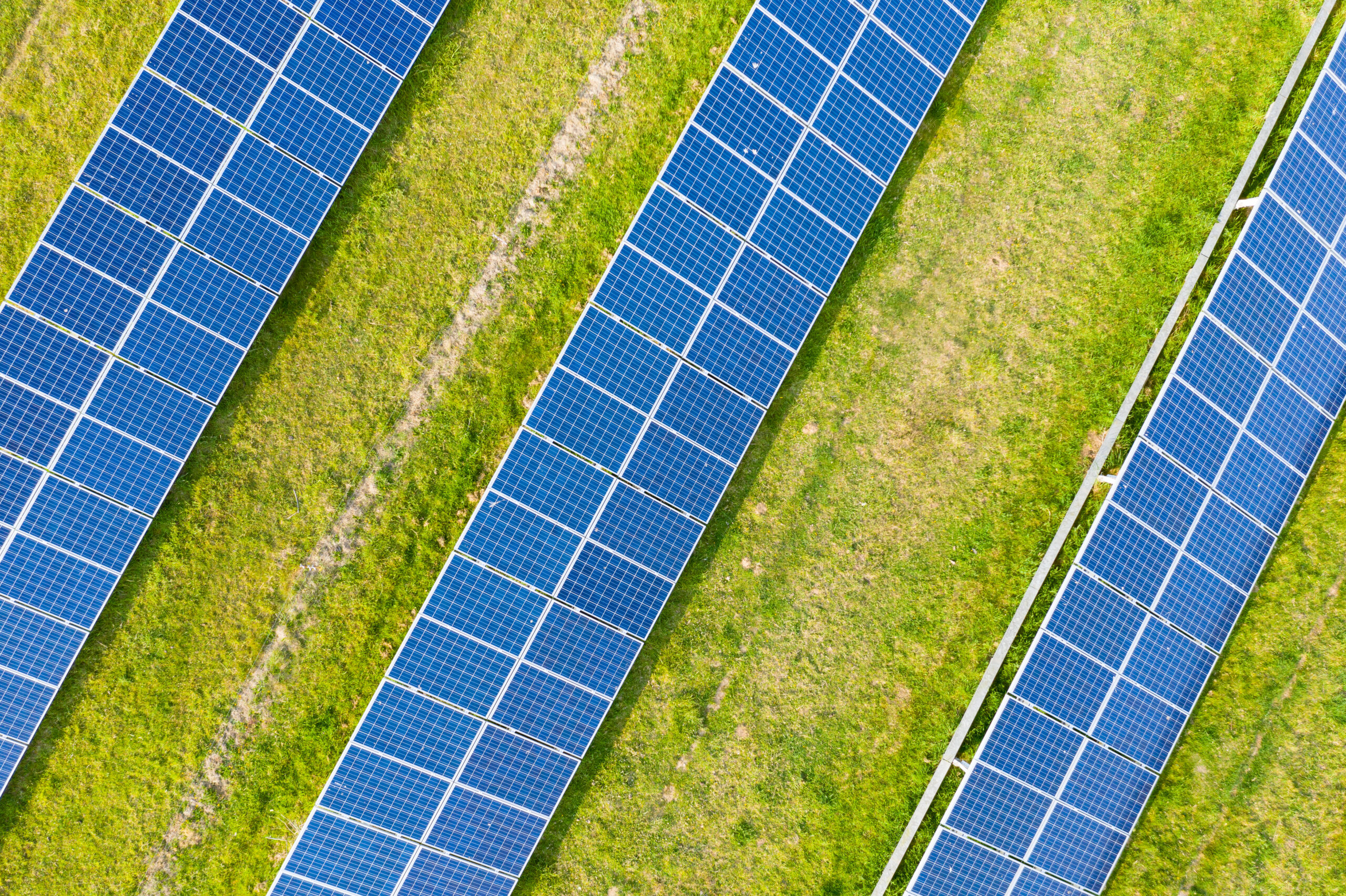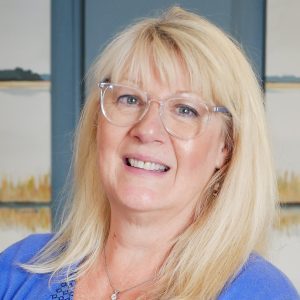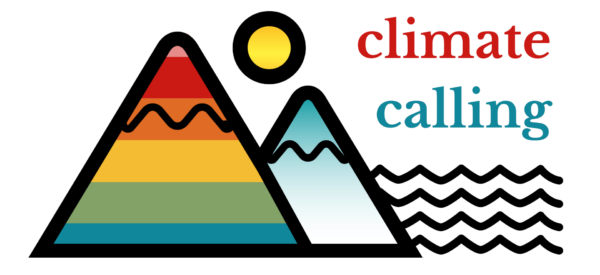It’s Not That Easy Being a Green Bank in Maryland — But It’s Getting Easier

For the past dozen years, Maryland Sen. Chris Van Hollen (D) has been introducing legislation in Congress to create a national green bank — a mechanism to provide some level of government support for the private sector to develop clean energy projects as the climate crisis worsens.
Van Hollen likes to describe the concept as “a force multiplier” — an opportunity for the public sector and private companies to work together with urgency at a critical moment for the warming planet.
But Congress is a hard place to get anything substantive done, and Van Hollen has largely been stymied in his efforts, which date back to his time in the House of Representatives. President Biden’s controversial “Build Back Better” legislative package included provisions to set up a national climate bank, but the legislation is stalled for now and possibly for the foreseeable future.
Still, Van Hollen and other policymakers and climate change activists see hope closer to home: The concept is catching on in Maryland, where three entities are considered to be green banks — and each is steadily expanding its mission.
The Maryland Clean Energy Center, which was created by legislation in 2008 and has been providing funding, technical assistance and marketing advice to clean energy entrepreneurs and government agencies, was designated the state’s official green bank in the Climate Solutions Now Act of 2022. The Montgomery County Green Bank, which has existed since 2016, is getting a new infusion of steady funding. And a Baltimore-based nonprofit called the Climate Access Fund is stepping up its efforts to install solar energy projects in low-income neighborhoods in the city and elsewhere in the state.
“Even when the federal government would not do it, you did it,” Van Hollen told jubilant Montgomery County leaders during a news conference on the new green bank funding earlier this year.
Global warming is happening so quickly — and its impact has already become so devastating — that it’s hard to imagine combating it with solutions that aren’t equally as dramatic and impactful. And yet some of the best policy prescriptions can be downright wonky, and involve the prosaic combination of government finance and hard-to-grasp emerging technologies.
That’s where the green banks often come in. They can help promote and fund clean energy initiatives that might not otherwise get the capital and attention they need to launch.
“For the states to be successful, it’s a combination of the investments they make, the policies they implement, and their advancement of technology,” said Katherine Magruder, executive director of the Maryland Clean Energy Center, in an interview.
But even if it is a rarified world with a language all its own, leaders in this specialized space see the urgency in what they are doing.
“This climate thing is a constant humming in your ear of scary negativity,” Magruder said. “And we want policymakers and average citizens to think, what are we willing to pay to save our planet?”
The American Green Bank Consortium counts 22 members in its ranks, from Hawaii to New England. Most are affiliated with a state or local government. A few Northeastern states, like Massachusetts, New York and Connecticut, are considered the leaders in the field, thanks partially to the level of investment state governments are making in those organizations and due to the maturity of their partnerships in the private sector.
Magruder is blunt about how the most effective green banks operate.
“Those states that have been most successful have had consistent and dependable funding to do what they’ve been asked to do,” she said.
That hasn’t always been the case for the Maryland Clean Energy Center. But the situation appears to be changing.
Maryland became a player in the market about a dozen years ago with the creation of the Maryland Clean Energy Center, a quasi-governmental agency that’s housed in College Park (though it’s technically a nonprofit, the MCEC refers to itself as “an instrumentality of the state”).

Katherine Magruder, executive director of the Maryland Clean Energy Center.
Its mission is to develop an economic development strategy that advances clean energy and energy efficiency products, services, and technologies. The center also provides technical assistance to local governments on best practices for evaluating proposed clean energy projects. It holds webinars on clean energy investments. It provides advice to homeowners and commercial property owners on how to apply for low-interest loans for energy infrastructure improvements. And it partners with an array of other state agencies that are working to mitigate climate change.
In the past year, the Clean Energy Center has been helping a company that’s developing rechargeable zinc batteries, another that is working to use wood as a replacement for steel in construction projects, and another that’s working to make recycling of certain plastics more efficient, among others.
“The MCEC is an identifiable home for so many of our clean energy ambitions,” said Del. Lily Qi (D-Montgomery), who has passed legislation to identify a consistent funding stream for the center. “We don’t need to look further, because MCEC has already proven itself as a public-private partner. It’s pushing clean energy innovation. It’s a market accelerator. That’s where the sweet spot is.”
When it launched, the MCEC got early funding through grants and loans from the Maryland Energy Administration. Then the center was awarded a portion of the carbon offsets purchased through the Regional Greenhouse Gas Initiative, a multistate organization that works to limit greenhouse gas emissions at power plants. MCEC currently operates on about $900,000 a year in state funds.
A bill introduced by Qi and Sen. Brian J. Feldman (D-Montgomery) in 2021 would have provided more funding for the center using other pots of money that the state reserves for clean energy initiatives. But Gov. Lawrence J. Hogan Jr. (R) vetoed the legislation, arguing that it would disrupt other existing clean energy programs if it was enacted.
“While I support the sponsors’ intent to spur innovation in clean energy, this bill is not a prudent and responsible application of precious targeted funding,” he wrote in his veto message.
The decision stunned the bill sponsors and MCEC leaders.
“Obviously, I’m disappointed,” Magruder said at the time.
The General Assembly resoundingly overrode Hogan’s veto during its special session last December, and Hogan was notably absent when the center held its annual clean energy summit in Annapolis this February, though members of his cabinet did attend and speak. Hogan has usually had a prime speaking slot at the summit.
By Magruder’s account, the MCEC since its inception has used $10.3 million in public funds to leverage about $130 million in private capital for clean energy projects. And the center got another boost in the sweeping climate legislation that passed the legislature this year — and which Hogan allowed to become law without his signature. The legislation recognized the Clean Energy Center as the state’s official green bank, conferring certain new rights and responsibilities — and funding sources — on the institution.
That part of the law won’t kick in until mid-2023, but Magruder and her colleagues are already beginning to prepare.
“Overall, I think the center is in a much better position to achieve its mission and do what it was created to do,” Magruder said after the climate bill passed both chambers of the legislature.
The Climate Solutions Act also spelled out new services the MCEC should provide, including prioritizing projects that emphasize the electrification of the state’s transportation system; weatherization of homes and commercial properties; community-scale resiliency projects; and creation of a Maryland Clean Bond program.
“We’ll be laying the groundwork to launch the [bond] fund the day that it comes into effect,” Magruder said.
Magruder called the climate legislation “momentous, a stake in the ground that needed to be in place.”
“This can’t happen soon enough,” she said. “Unfortunately, we’re a little behind the 8-ball in comparison to other states.”
‘The single largest county investment in climate change’
Montgomery County created its green bank in 2016 with about $18 million in funding that the county government received from the Pepco and Exelon merger. Unlike the Maryland Clean Energy Center, which often focuses on high-tech start-ups, the county green bank can work on more local projects, like helping a condominium association, church or commercial landlord with energy retrofits.
“We can communicate with community associations, different venues, religious leaders, community leaders, about what it takes to operate more efficiently,” said Tom Deyo, the Montgomery County Green Bank’s executive director. “We educate and inform.”
Deyo said the groups and individuals his organization works with seek guidance and assistance for a variety of reasons — but often it’s because they are unsure of the challenges and costs associated with converting to green energy.
“We take some risks off the table for you if you partner with us,” he said. “We’re sort of like a chemistry lab. We go out and figure out what the right recipe is.”
In recent months, the green bank has provided loans so a condo association could install electric vehicle charging stations in its parking lot; helped a tavern in Olney rebuild in a more energy efficient way after a fire and COVID-19 changed the way it served its patrons; and helped an office building in Bethesda install a large clean energy HVAC unit on its roof, among other projects.
The county’s green bank got a major boost earlier this year when the county council passed a law dedicating 10% of the county’s annual energy tax revenues to the bank, a percentage that amounts to almost $20 million a year.
Beyond providing more capital for the county to partner with private and public sector entities to build green energy projects, the law also requires the green bank to use 20% of the funds allocated by the county in areas where officials are trying to elevate equity in investment decisions. Another 15% of funds must be used for reducing the cost of energy projects undertaken by property owners.
The new law will also prohibit the use of the county funds after July 1, 2023, for new mechanical energy equipment that uses fossil fuels.
The legislation, sponsored by Councilmembers Tom Hucker (D) and Andrew Friedson (D), was supported by a large and unlikely coalition of local organizations, from environmentalists to landlord groups to chambers of commerce.
“I believe in broad impressive coalitions,” said Hucker, who called the legislation “historic.”
Deyo said the legislation will enable the green bank to expand the scope of services it offers and the number of people and groups it’s able to help.
“It’s the single largest county investment in climate change in history,” he said. “It’s win, win, win — for our county residents, for our businesses and for the planet. The green bank can bring much more investment to the table than the county can alone.”
‘A start-up in a start-up industry’
The state’s third green bank, the Baltimore-based Climate Access Fund, is different from the other two in many significant ways — including the fact that it wasn’t created by government. It’s a pure up-from-the-ground nonprofit designed to bring solar energy installations into low income neighborhoods and lower residents’ utility bills. But it’s like a green bank because it attempts to merge government and charitable revenues with private sector funds to pay for projects that reduce greenhouse gas emissions.
“We’re a very unusual green bank,” said Lynn Heller, Climate Access Fund’s executive director. “We’re really a start-up in a start-up industry.”
The Coalition for Green Capital, an international organization, provided seed funding, along with some Maryland-based foundations, and the organization was created in 2018. Heller — who had been a vice president focused on climate programs at the Baltimore-based Abell Foundation — came aboard then.
The idea behind the fund, Heller said, was that wealthy and even middle-class homeowners can afford to convert their homes to solar energy, but that lower-income residents would not have the financial means or other resources to do so.
“It’s not really accessible to low-income families, so what are we doing about that?” she said.
At first, the fund’s ambitions were limited and focused on installing solar panels on a few buildings in Baltimore City. But now it’s expanding its scope.
“It’s not great to use grant money to do one house at a time,” Heller said. “The challenge has been how to make it scalable.”
Identifying and developing projects was a major undertaking, she said. But recently there’s been real progress.
Soon the fund will put solar panels on Henderson-Hopkins Elementary School in East Baltimore, a project which should provide power to about 180 nearby households. It’s also working with a farmer in Garrett County to put solar arrays on 10-12 acres of non-arable land, which the owner initially had tried to convert into a ski slope. The electricity there would be generated to as many as 500 low-income families. Another project on the Eastern Shore is in the offing.
The climate fund will also help the residents receiving the solar power pay their electric bills if they fall behind.
“Solar development on a good day has so many barriers,” Heller said. “We do projects that the market won’t do, so by definition they’re very hard.”
But she said she’s determined to prove to investors that investing in these projects will pay off.
“Our hypothesis is they may not be as risky as some people assume.”
‘Build Back Better’ stymied
Meanwhile, Van Hollen continues to introduce legislation to create a national green bank. He is — along with a veteran congressional environmentalist, Massachusetts Sen. Ed Markey (D), and three other Democrats — the sponsor of S. 283, to establish a National Climate Bank.
By the sponsors’ estimate, an initial $100 billion in federal funding would drive $463 billion of total investment in four years, and $880 billion of total investment in 10 years through the green bank. They suggested the legislation would create almost 4 million jobs in four years and 12 million jobs over the next decade, and would be especially beneficial in disadvantaged communities. And, they asserted, funding green infrastructure at that scale could reduce cumulative national emissions by more than 2.5 billion metric tons over the first 10 years, or roughly 20% of the reductions needed to reach net zero emissions by 2050 and avoid the most catastrophic effects of global warming.
Van Hollen last year urged his colleagues to make the legislation “a top priority.”
“Investing in clean energy will not only help us tackle the climate emergency but is also key to generating millions of new American jobs,” he said at the time. “The National Climate Bank Act takes a model that’s been proven to work and creates an engine to drive innovative climate solutions that will help us build a greener economy and a better future for generations to come.”
The Senate Environment and Public Works Subcommittee on Clean Air, Climate, and Nuclear Safety did hold a hearing on the measure in April 2021, but it has stalled along with other major climate legislation in Congress. Van Hollen and the bill’s co-sponsors became hopeful when several elements of their bill were incorporated into the Biden administration’s “Build Back Better” proposal, but that too has hit a roadblock in the Senate.
Still, Van Hollen can revel in some of the developments back home, and said he hopes local policymakers and green energy entrepreneurs will, too.
“The more you can showcase how this works well at the local level,” he said, “the more you can show that it can work at the federal level.”





 Creative Commons Attribution
Creative Commons Attribution